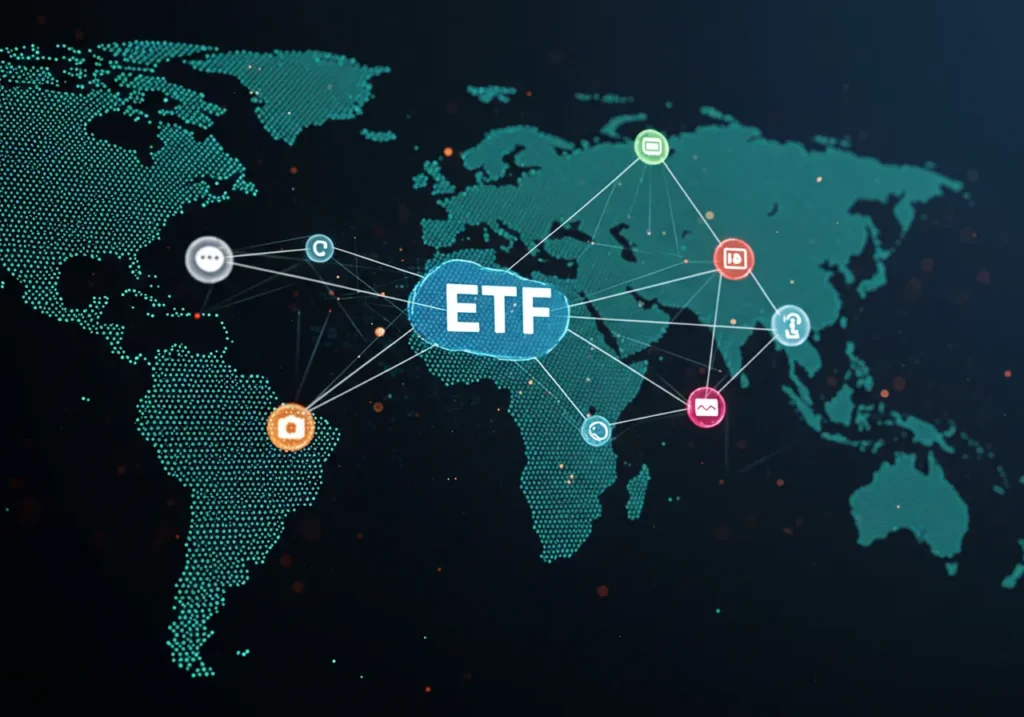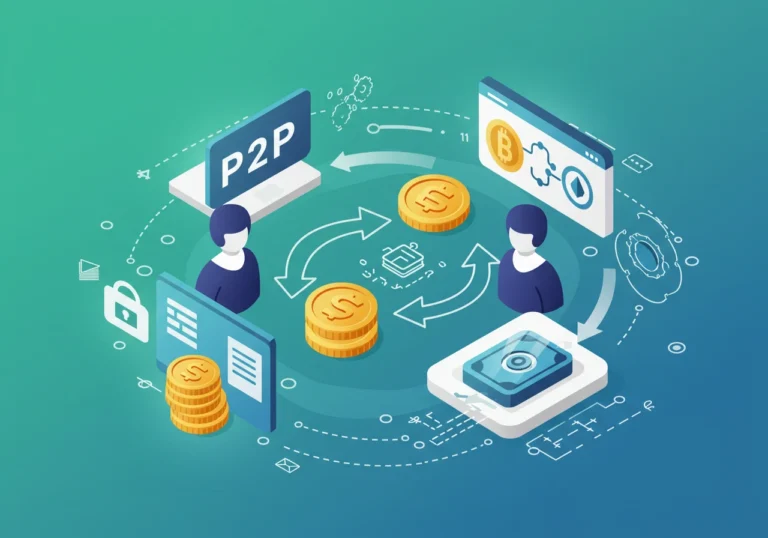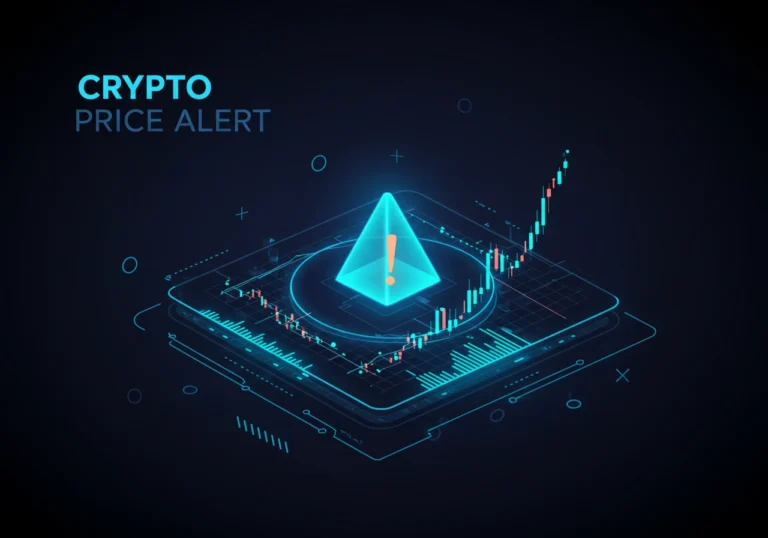The Bitcoin ETF’s Impact on Volatility: Advanced Market Analysis for BTC Investors
ETF’s have become a major force behind Bitcoin’s price behavior. If you hold BTC or study its price patterns, this matters. Below I’ll walk through what ETFs do, how they change volatility, and practical ways investors can think about risk.
What is a Bitcoin ETF’s and why it matters

A Bitcoin ETF’s (exchange-traded fund) is a product that lets people buy exposure to Bitcoin without holding the coin itself. The ETF owns or tracks Bitcoin, and investors buy shares of that fund on traditional stock exchanges.
This matters because the ETF opens the door for many buyers and sellers who prefer the rules and custody of stock markets — pensions, mutual funds, ETFs, and everyday investors with brokerage accounts. More participants mean more capital flows, and more capital flows change how prices move.
How ETFs change price behavior: the main channels
Here are the main ways ETF’s influence Bitcoin’s volatility. Think of them as pipes that move water into and out of a pool — sometimes gently, sometimes in surges.
1. Increased liquidity — usually stabilizing, sometimes not
When more people can trade BTC through ETFs, the market usually has more buyers and sellers at any price. That tends to smooth out small price bumps. More liquidity means a single trade is less likely to swing the price wildly.
But when huge blocks of ETF shares are created or redeemed, they can move large amounts of BTC between exchanges and cold storage. Those flows, when concentrated in a short time, can create big moves.
2. Institutional flows and predictable schedules
Institutions often trade on schedules — quarter ends, rebalancing dates, or when inflows from investors arrive. If many ETFs see large inflows on the same day, demand surges and prices can spike. If outflows hit together, prices can fall quickly. That clustering makes volatility more predictable around calendar events, but it raises the size of moves when they happen.
3. Arbitrage mechanics and tighter spreads
ETF arbitrage keeps ETF share prices aligned with the value of the underlying Bitcoin. Professional traders buy or sell the ETF versus spot Bitcoin to lock in profit. This arbitrage narrows the difference (spread) between ETF and spot prices, usually reducing small intraday swings.
But arbitrageurs also amplify moves when they race to exploit fast-changing prices. In times of stress, their rush can accelerate price changes instead of damping them.
4. Access to new investor types — emotional crowd effects
ETFs let more casual and retail investors participate without managing wallets or private keys. That’s good — simpler access lowers friction. But new groups of buyers may react emotionally to headlines. Rapid benign news can cause fast buying; fearful news can trigger quick selling. That introduces a different kind of volatility: driven by sentiment rather than fundamentals.
5. Market structure shifts: order book changes
As more volume flows into ETFs, derivatives and futures markets also adapt. Market makers and liquidity providers change how they supply liquidity. Order books on spot exchanges may thin in some price bands, making price moves sharper during sudden demand or supply shocks.
Real-world examples: how ETF events moved prices

It helps to see how the pieces interact.
- ETF launch day: When a large Bitcoin ETF launched in a major market, the initial inflows created strong demand. Price rose quickly in hours. The ETF had to buy spot Bitcoin to back shares, pushing prices higher.
- Quarter-end rebalancing: Several funds rebalanced on the same day. Large purchases concentrated in a timeframe created a noticeable intraday spike, later reversed as selling pressure returned.
- Redemption wave: When a negative regulatory rumor triggered redemptions, the ETF providers sold BTC to meet withdrawals. Spot price dipped sharply, and then recovered as buyers re-entered.
These actions are not hypothetical. They show how ETF mechanics — creation/redemption, institutional schedules, and inflows/outflows — translate into price action.
Is volatility overall higher or lower after ETFs?
Short answer: it depends.
- For small, everyday moves, ETFs often reduce volatility by adding liquidity and arbitrage mechanisms.
- For major swings, ETFs can increase the magnitude because they bring large, collective flows that move markets quickly.
- For predictability, ETFs make some volatility easier to anticipate (e.g., around set events), which helps risk planning.
So ETFs don’t simply make Bitcoin calmer or crazier. They reshape the pattern of volatility — smoothing everyday noise but creating potential for larger, clustered moves when big flows arrive.
How BTC investors should adjust: practical steps
You don’t need to be an expert quant to use this knowledge. Here are clear, practical steps.
1. Watch the inflows and outflows
Many services publish ETF inflow/outflow data. Track these numbers. Large sustained inflows can presage upward price pressure; large outflows can warn of selling.
2. Expect event-driven moves
Mark calendar dates: quarter-ends, known rebalancing days, ETF reporting dates. Around these dates, tighten risk controls or reduce position size if you want to avoid surprise swings.
3. Use layered exit and entry plans
Instead of one big trade, split buys and sells over time or price buckets. This reduces the chance of getting caught on a single, sharp move tied to ETF flows.
4. Keep a liquidity buffer
If you hold assets to use in emergencies, keep some in easily tradeable form. When markets move due to ETF flows, access to liquid funds lets you respond without panic.
5. Consider hedging if needed
For larger portfolios, look at options or futures to hedge large directional risk. Hedging costs money, but it can protect against rapid downside driven by ETF redemptions.
6. Study correlation changes
ETFs can tighten BTC relationship to broader markets (stocks, risk-on assets). Watch correlations. If BTC starts moving more with equities, portfolio risk behaves differently and deserves adjustment.
Common myths and realities
Myth: ETFs eliminate all crypto market volatility.
Reality: ETFs reduce some noise but can amplify large moves.
Myth: ETFs make Bitcoin a conventional asset only.
Reality: ETFs add conventional market tools, but Bitcoin retains unique drivers: network activity, on-chain events, and regulation.
Quick checklist for prudent BTC investors
- Track ETF inflow/outflow metrics weekly.
- Note scheduled institutional events and rebalancing dates.
- Use staggered trades to avoid timing risk.
- Keep liquidity for quick responses.
- Use hedges where downside risk is unacceptable.
- Re-assess correlation with broader markets regularly.
Where to find ETF flow data and what to watch
There are financial dashboards, market data vendors, and ETF issuers that publish daily inflows/outflows. Look for:
- Net daily inflows (watch spikes).
- Cumulative weekly flows (trend direction).
- Creation vs. redemption patterns (who’s buying vs selling).
- Arbitrage premiums/discounts between ETF price and spot BTC.
Longer-term picture: ETFs and market maturity
Over time, ETF involvement often signals a maturing market. More institutional structures, better custody, and clearer regulation usually follow. Mature markets can weather shocks better. But maturity doesn’t erase risk — it changes the actors and the channels through which risk travels.
For long-term investors, this can be positive: more tools, more participants, and deeper liquidity. But it also means staying alert to new structural risks, like concentrated ETF share ownership or novel derivatives.
Including these visuals helps readers see the flows that drive price moves.
Conclusion: think in flows, not only in candles
The biggest lesson is this: ETF’s reshape how capital moves into and out of Bitcoin. They change liquidity, introduce institutional rhythms, and tighten links with traditional financial markets. For investors, that means a shift in how volatility looks — less noise in routine trading, but more potential for large, concentrated moves.
If you hold Bitcoin, treat ETFs as a new market actor to watch, not as a magical cure. Use simple tools — tracking inflows, planning around events, and layering trades — to stay calm when the market pulls hard. Ultimately, being ready is more powerful than trying to predict every move.
Key takeaways =)
- ETF’s let investors access Bitcoin via stock exchanges, increasing participation and liquidity.
- ETFs reduce small intraday volatility but can amplify large, clustered price moves.
- Watch ETF inflows/outflows and calendar events to anticipate potential volatility.
- Use staggered trades, liquidity buffers, and hedges to manage ETF-driven risk.
- Over time, ETFs contribute to market maturity but introduce new structural risks.
FAQ
Q: Do ETFs make Bitcoin safer?
A: They make access safer for some investors and improve custody options, but they do not remove market risk. ETFs change who trades and how, which changes the shape of risk.
Q: Should retail investors sell when ETF inflows spike?
A: Not automatically. Inflows can push prices higher, but short-term trading around inflow events is speculative. Use a plan and avoid emotional decisions.
Q: Can ETFs cause sudden crashes?
A: Large coordinated redemptions or rapid outflows can cause sharp price drops, especially if spot liquidity is stretched. These events are possible but not guaranteed.
Q: How often should I check ETF flow data?
A: Weekly tracking is practical for most investors; active traders may monitor daily.
Q: Will ETFs remove Bitcoin’s unique on-chain dynamics?
A: No. On-chain activity, developer work, and network adoption remain important drivers alongside ETF-driven flows.

Hello, I’m Edmilson Dias, founder of CoinBringer. I created this platform to guide people through the fast-moving world of cryptocurrency with clarity and safety. With years of research in blockchain and digital security, my goal is to translate complex topics into practical knowledge, offering reliable tutorials, safety insights, and guidance for both newcomers and experienced users.
Discover more from CoinBringer
Subscribe to get the latest posts sent to your email.







